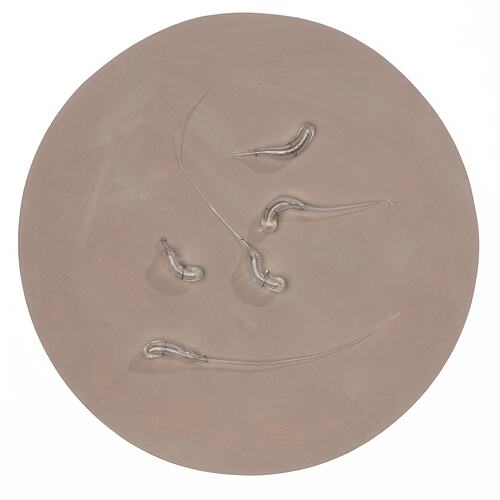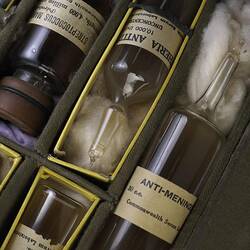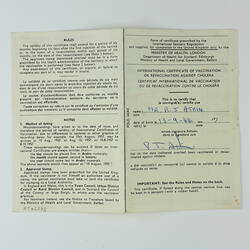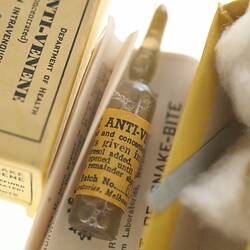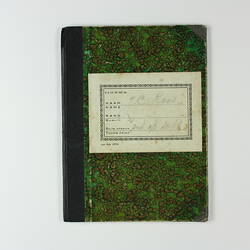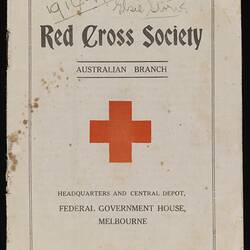Cholera is a bacterial disease caused by Vibrio cholerae, of which only two serogroups - O1 and O139 - cause outbreaks. It is contracted through food and water contaminated with the bacteria, which typically thrives in warm, salty water, and is closely linked to lack of clean water and poor sanitation. The cholera toxin causes cells in the intestines to rapidly release water, leading to severe diarrhoea and dehydration, as well as vomiting and cramps. Victims can show a blue tint to their skin, giving cholera the name Blue Death; it has also been called Black Cholera. Loss of fluid can lead to hypovolemic shock, in which the heart struggles to pump sufficient blood around the body. Severe cases can cause death within hours. Cholera is now treated with antibiotics and fluid replacement.
Cholera-like illnesses were reported in ancient times. The first cholera pandemic in the 19th century was reported in 1817-1823, initially stemming from contaminated rice in India. The cholera pandemic spread again from 1828, reaching Europe and Great Britain, and later America and Canada. It resurged again in 1847, circulating until about 1859. Pandemics of cholera continued in the 19th century and into the 20th century. In 1918-1919 cholera killed more than 500,000 people in India - even as the Spanish flu was decimating populations around the world.
During the 1850s pandemic Italian microbiologist Filippo Pacini identified the cholera bacterium (1854), but it was not until 1883 that German microbiologist Robert Koch was able to grow and describe V. cholerae. The first cholera vaccine was developed in 1885 by Spanish physician Jaume Ferran i Clua, drawing on the work of Louis Pasteur.
Cases of cholera probably occurred in Victoria from the first years of settlement, although the level of disease was difficult to confirm in the absence of formal diagnoses. An article in the Geelong Advertiser in March 1845 was confident in a report of a cholera case as 'after his death his body became quite blue, which leaves no doubt of the cause of his death.' In 1855, during the cholera pandemic, the Registrar-General reported (year ending on 30 June 1854) that 13 cases of cholera had been confirmed in Melbourne and three in regional Victoria; by 1865 the number of deaths from cholera in just three months was 104 people. In 1865 The Argus reported a case of 'English cholera' in Jones's Creek - 'the deceased was ill only a few hours.' (The term 'English cholera' relates to the prevalence of reports of cholera outbreaks in London and other English cities - again, not confirmed as cholera with certainty.) Some cases of cholera were associated with arrivals of ships, such as the HMAS Miranda, which arrived in Melbourne in November 1882 carrying Henry Tope, sick with 'English cholera'. He died after three days' illness. In 1866 the Medical Society of Victoria heard that the alarming threat of cholera was very real and immediate, and infected air and water were blamed. Brandy and salt were the only identified treatments.
More effective action to prevent the spread of cholera, including quarantining ships that had departed from ports with cholera outbreaks, and improvements to water supply and sewerage, contributed to the reduction of cholera cases in Victoria.
Decades later, reports of cholera in Europe during World War I added further to the horrors of conflict, with vaccines against cholera insufficiently available. With the increasing use of vaccines during the 20th century, and improved water purity and hygiene, cholera has declined significantly, although it remains endemic in many countries and devastating outbreaks occur still . Cholera vaccination is not required in Victoria, with rare cases associated with travellers.
References
'Cholera', https://www.history.com/topics/inventions/history-of-cholera, accessed 13/5/2020.
'Cholera', World Health Organisation https://www.who.int/en/news-room/fact-sheets/detail/cholera, accessed 13/5/2020.
A.L. Lopez, corresponding author M.L.A. Gonzales, J.G. Aldaba, and G. Balakrish Nair, 2014. 'Killed oral cholera vaccines: history, development and implementation challenges'. Ther Adv Vaccines. 2014 Sep; 2(5): 123-136. doi: 10.1177/2051013614537819.
K. Vyas, 2019. 'The Blue Death: How Cholera Got This Name'. https://interestingengineering.com/the-blue-death-how-cholera-got-this-name, accessed 13/5/2020.
1845 'MELBOURNE.', Geelong Advertiser (Vic. : 1840 - 1845), 19 March, p. 3. , viewed 13 May 2020, http://nla.gov.au/nla.news-article92674439.
1855 'REGISTRAR GENERAL'S REPORT.', The Age (Melbourne, Vic. : 1854 - 1954), 7 September, p. 6. , viewed 13 May 2020, http://nla.gov.au/nla.news-article154891906.
1865 'MONDAY, APRIL 17, 1865.', The Argus (Melbourne, Vic. : 1848 - 1957), 17 April, p. 4. , viewed 13 May 2020, http://nla.gov.au/nla.news-article5739888.
1866 'BOROUGH COUNCIL.', The Argus (Melbourne, Vic. : 1848 - 1957), 4 January, p. 5. , viewed 13 May 2020, http://nla.gov.au/nla.news-article5783879.
1882 'DEATH FROM ENGLISH CHOLERA.', The Herald (Melbourne, Vic. : 1861 - 1954), 2 November, p. 3. , viewed 13 May 2020, http://nla.gov.au/nla.news-article241187773.
S.D. Bird, 1866. 'On Cholera'. Medical Society of Victoria, meeting 7 February, reported in the Australian Medical Journal March 1866, pp. 73-92.
More Information
-
Keywords
-
Localities
-
Authors
-
Article types
